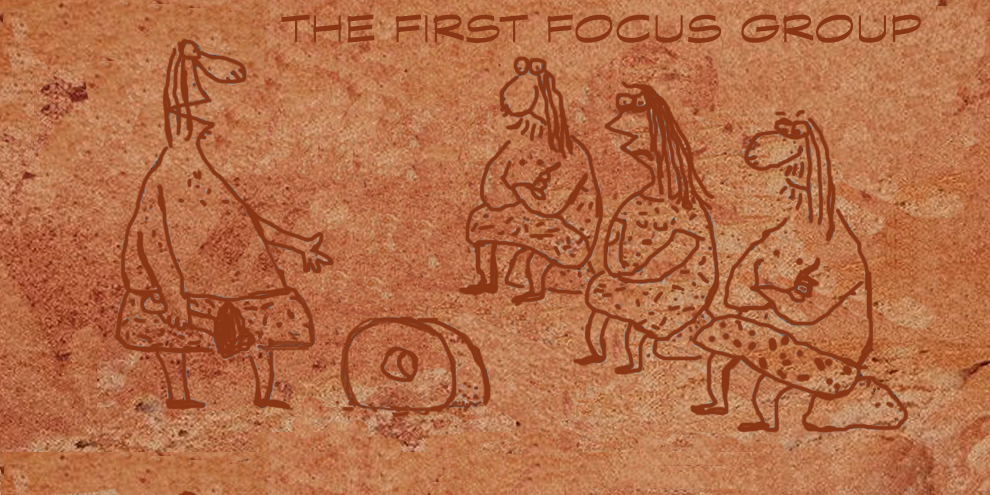Editor’s note: Jim Nelems is founder and CEO of The Marketing Workshop, Inc., an Atlanta research firm. This article excerpted from his book Research to Riches: The Secret Rules of Successful Marketing, published by Long Street Press.
No one is sure when the first focus group was conducted. After all, the term focus group is simply another name for a discussion session, typically with eight to 12 people, in which the topic is “focused” in given areas, but it may be the single most popular marketing research technique. There are over 1,000 focus group facilities in the U.S., and over 200,000 such focus groups are conducted annually. Just about everybody does focus groups. (That’s one of the problems, of course: they are too easy to do.)
Focus groups are often used for several reasons, some of which are invalid ones. True, focus groups are fast (they can be set up in a few days to a week), inexpensive compared to quantitative research, and can provide some basic and sometimes in-depth learning within the “fast and inexpensive” (some would say “quick and dirty”) context.
To elaborate, focus groups can be helpful if properly used, and there are many valid reasons for conducting them:
- to learn consumer language and terminology;
- to test assumptions or hypotheses regarding reactions to proposed new products and services;
- to demonstrate to clients not familiar with the technique how little consumers may know or care about the new concept.
But even then focus groups have limitations and can be abused. They are directional, not projectable; indicative not quantitative. And you don’t make groups projectable by doing more focus groups, although some practitioners believe that.
Pity the poor moderator whose client wanted to do 16 focus groups - two in each of eight cities, because their competition was different in each city. Any moderator in this situation will soon find herself (most moderators are female, which is an interesting topic in itself) asking the group participants in the third or fourth city: “Pardon me, but have I asked you this before?”
The truth is that while the competitive environment may well differ by city, in virtually all product and service categories, the attitudes that drive decisions and how people think about products and brands do not. Further, differences of this type, if they do exist, are rightfully found in quantitative studies. After all, imagine how many telephone interviews could be conducted for the price of 16 focus groups.
Focus groups rely, sometimes too much, on what people verbalize in a group. When people start talking, either with strangers or friends, they never want to put themselves in a bad light or reflect unfavorably on themselves. So they often say things that sound good: “I’m not influenced by advertising” is a perfect example. Well, if that were true, there would never be any advertising. But we know advertising influences people, regardless of what they say.
 Focus group moderators (a moderator is called a “facilitator” in all disciplines other than marketing research) must constantly be on guard to prevent a focus group participant who may have a dominating personality, or may quickly be seen to have more knowledge than the other participants, from leading the discussion. Sometimes the moderator must remove a particular person from the room because his or her influence is so high.
Focus group moderators (a moderator is called a “facilitator” in all disciplines other than marketing research) must constantly be on guard to prevent a focus group participant who may have a dominating personality, or may quickly be seen to have more knowledge than the other participants, from leading the discussion. Sometimes the moderator must remove a particular person from the room because his or her influence is so high.
We once had to remove a lawyer from a group because he got off on a tangent saying that to even discuss real estate developments in a focus group on behalf of a residential development client meant the client was violating the law by having the focus group since the group discussion was not preceded by a prospectus.
In a different situation, one of the clients wanted to sit in the group, “as a participant,” to get the discussion going in the direction desired. The problem was, any time a participant made a negative comment about her company’s product, she felt obligated to defend it. The group was ruined.
Whether or not clients like focus groups is often influenced by their experience observing focus groups. If someone has had a bad focus group (easy enough to do), he may well be biased against them. If that same client has done focus groups and the group participants really liked his new product idea, then he more than likely is a big fan of focus groups because they told him what he wanted to hear. This is one of the real problems in groups: the tendency to interpret conversations from group members in light of the observer’s own experience.
Another problem is that the findings are often taken literally. Just because one or two people or an entire group of people say something in a group does not mean you should take their advice. A typical viewer comment would be, “I know it’s only one person, but...”
A few years ago a state regulatory authority on apples would not allow their state’s apple growers to sell apples with less than a two-inch diameter because they said focus groups told them that apples smaller than two inches were inferior. Such nonsense. Millions of dollars in wasted apples that had to be fed to hogs just because a couple of people in a focus group made such an offhand comment.
You should cringe - and rightly so - when you read, and I read this often, that proposed advertising was “tested” in focus groups and found to be either great or terrible. Commercials should never be “tested” in focus groups because a focus group is not a test. A focus group can provide direction to advertising, but relying upon what a group of people say about advertising in a group where it is cool to say you are not influenced by advertising is foolish.
In doing a focus group on breath mints, one lady was adamant about why she used Certs breath mints. “It’s certainly not because of the advertising,” she said, very determinedly. It is because (and she held up her arms and touched the forefinger of each hand together) “it’s two mints in one.”
Never, never, never test commercials in focus groups. Show them if you will for one reason or another, but never refer to this, or use this, as any test of advertising.
Beware of any report on a focus group that reports numbers: three participants said this, two said that. If someone in a 10-member group makes a comment, this cannot be projected to 10 percent of the population. Rather it only indicates the presence of an attitude. Again, focus groups are not projectable. But they are great tools of learning, especially to clients who only hear from their friends, spouses, neighbors or relatives about how great their products or services are. Just knowing how little information most people have on certain products, what they don’t know and what they do not care to know is extremely important.
Also beware of any focus group report that reports mean ratings: Attribute A got a mean rating of 5.4, Attribute B a rating of 6.7, etc. There is no statistical validity to the reliability of such meaningless scores, and you should run away from any report that has them.
And beware of wanting to do focus groups because they are “cheap.” Conducting focus groups because they cost less than other techniques is using the wrong decision criteria. They may cost less in dollars than other techniques, but the true cost may well be in the cost of incorrect, misleading or wrong information.
